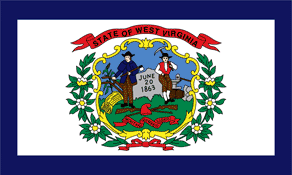West Virginia State Standards for Language Arts: Grade 5

Currently Perma-Bound only has suggested titles for grades K-8 in the Science and Social Studies areas. We are working on expanding this.
WV.RLA.S.5.1. Reading: Students will apply reading skills and strategies to inform, to perform a task and to read for literacy experience by identifying and using grade appropriate essential reading components (phonemic awareness, phonics, vocabulary, fluency, comprehension, and written application) and selecting a wide variety of literature and diverse media to develop independence as readers.
RLA.O.5.1.1. Use root words, prefixes and suffixes to understand words, change word meanings and generate new words appropriate to grade level.
RLA.O.5.1.2. Use a variety of strategies (e.g., etymology, context clues, affixes, synonyms, antonyms) to increase grade-appropriate vocabulary.
RLA.O.5.1.3. Use denotation to understand meaning.
RLA.O.5.1.4. Label the figurative language in text.
RLA.O.5.1.5. Select defining characteristics, construct background knowledge and develop reading skills to understand a variety of literary passages and informational texts by West Virginia, national and international authors:
RLA.O.5.1.5.a. Myth
RLA.O.5.1.5.b. Fantasies
RLA.O.5.1.5.c. Biographies
RLA.O.5.1.5.d. Autobiographies
RLA.O.5.1.5.e. Science fiction
RLA.O.5.1.5.f. Tall tales
RLA.O.5.1.5.g. Supernatural tales
RLA.O.5.1.5.h. Historical fiction
RLA.O.5.1.6. Determine main ideas and locate supporting details in literary passages and informational texts.
RLA.O.5.1.7. Use pre-reading strategies toanalyze text for the type of text to determine comprehension strategies:
RLA.O.5.1.7.a. Previewing
RLA.O.5.1.7.b. Activating prior knowledge
RLA.O.5.1.7.c. Questioning
RLA.O.5.1.7.d. Skimming
RLA.O.5.1.7.e. Scanning
RLA.O.5.1.8. Differentiate and apply comprehension strategies in literary and informational texts to
RLA.O.5.1.8.a. Draw conclusions
RLA.O.5.1.8.b. Predict
RLA.O.5.1.8.c. Use context clues
RLA.O.5.1.8.d. Summarize
RLA.O.5.1.8.e. Judge text critically
RLA.O.5.1.9. Determine the elements of literature (e.g., characterization, conflict, plot) to construct meaning and recognize author's/reader's purpose.
RLA.O.5.1.10. Compare and contrast text connections to self, to other texts and to world cultures in literary and informational texts.
RLA.O.5.1.11. Identify literary techniques used to interpret literature (e.g., compare/contrast or cause/effect).
RLA.O.5.1.12. Read and understand various types of poetry.
RLA.O.5.1.13. Identify the parts of a book, know their purposes and locate information (e.g., table of contents, index, glossary).
RLA.O.5.1.14. Classify and interpret graphic aids (e.g., maps, charts, graphs, tables, timelines).
RLA.O.5.1.15. Increase the amount of independent reading to comprehend, analyze and evaluate literary text and informational text.
WV.RLA.S.5.2. Writing: Students will apply writing skills and strategies to communicate effectively for different purposes by using the writing process, applying grammatical and mechanical properties in writing and selecting and evaluating information for research purposes.
RLA.O.5.2.1. Use the five-step writing process (pre-writing, drafting, revising, editing, publishing) to generate topics, plan and develop a 3 - 5 paragraph composition.
RLA.O.5.2.2. Arrange thoughts and ideas in graphic representations to plan and write a product.
RLA.O.5.2.3. From a prompt, use the writing process to develop a 3-5 paragraph composition with an introductory paragraph, supporting detail paragraph(s), and concluding paragraph that incorporates specific, relevant details.
RLA.O.5.2.4. Use the five-step writing process to write for a specific purpose and for an intended audience (e.g., creative, narrative, informative, journal, friendly letter, business letter).
RLA.O.5.2.5. Write and edit the mechanics and grammar of a variety of sentence types:
RLA.O.5.2.5.a. Simple
RLA.O.5.2.5.b. Compound
RLA.O.5.2.5.c. Declarative
RLA.O.5.2.5.d. Exclamatory
RLA.O.5.2.5.e. Imperative
RLA.O.5.2.5.f. Interrogative
RLA.O.5.2.6. Select and use a variety of resource materials to plan and deliver a short research project, citing references.
RLA.O.5.2.7. Draft analogies, illustrations, examples, or anecdotes to respond to an oral, visual, or written prompt.
RLA.O.5.2.8. Use basic transitional words to signal organization of a composition.
WV.RLA.S.5.3. Listening, Speaking and Media Literacy: Students will apply listening, speaking and media literacy skills and strategies to communicate with a variety of audiences and for different purposes.
RLA.O.5.3.1. Exhibit effective oral communication skills (e.g., rate, audience, etiquette, standard English) through the presentation of
RLA.O.5.3.1.a. Readers theater
RLA.O.5.3.1.b. Choral reading
RLA.O.5.3.1.c. Personal narratives
RLA.O.5.3.1.d. Recitations (poetry, historical documents)
RLA.O.5.3.1.e. Dramatizations
RLA.O.5.3.2. Compare and contrast personal experiences to oral/visual information.
RLA.O.5.3.3. Listen and respond to different literary forms and speakers (e.g. summarize and paraphrase to confirm understanding, recount personal experiences, listen to information and exhibit comprehension, provide reasons in support of opinions, respond to others' ideas).
RLA.O.5.3.4. Create an age-appropriate media product that demonstrates format, purpose, and audience.